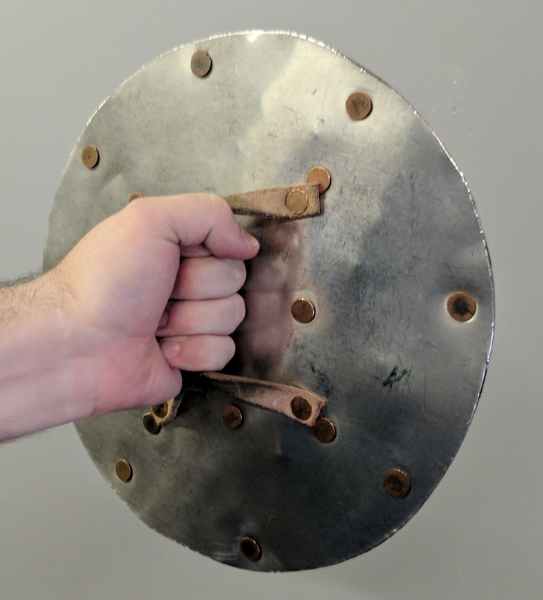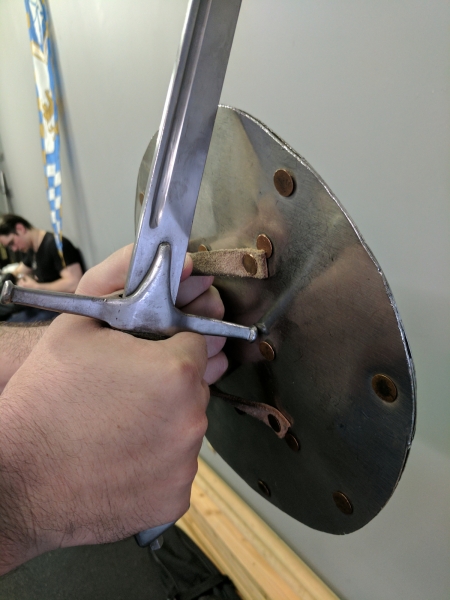Gripping the Sword and buckler.
The pictures from Elashvili's text are a bit degraded, so for those who are interested in trying this out, here is a modern take. Please excuse the ad-hoc nature of these. The straps on this buckler aren't quite fully accurate, (I'll be talking about why and what you can do for yours in a later post) and the buckler is my old crufty one which I had on hand when I took these.
Gripping the sword and buckler

Before we can look at how the sword is held, we'll begin with the buckler as it is simpler to picture and explain. The design of the buckler informs much of the way it is gripped and used. Because the gripping is done straps with wide anchor points, the hand grips these in a fist as if you were punching the buckler. One thing about this is that unlike Western dished bucklers with a solid grip, the length of the straps needs to be set within a distinct range to fit the hand size and grip of the person using it.

Another thing to note is that it was not uncommon for the Khevsur to grip a dagger with their buckler hand in an icepick grip so that it projected downward below the buckler. This provides some additional defense against low attacks, as well as some additional offensive capability to the buckler hand. It does this however at the cost of the ability to easily bring the sword blade around the bottom of the buckler to a position analogous to underarm or prima from MS I.33.

Unlike most western swordplay, the sword itself is gripped in what is basically a hammer grip. This is, we are told, to prevent being disarmed, and that the Khevsur retain this grip even when thrusting. Personally, I have found the best success with a grip which is roughly halfway between the hammer grip and a classical sabre grip. (I need to take a new photo. this one is old and not the best.)
There are no published comments.
New comment